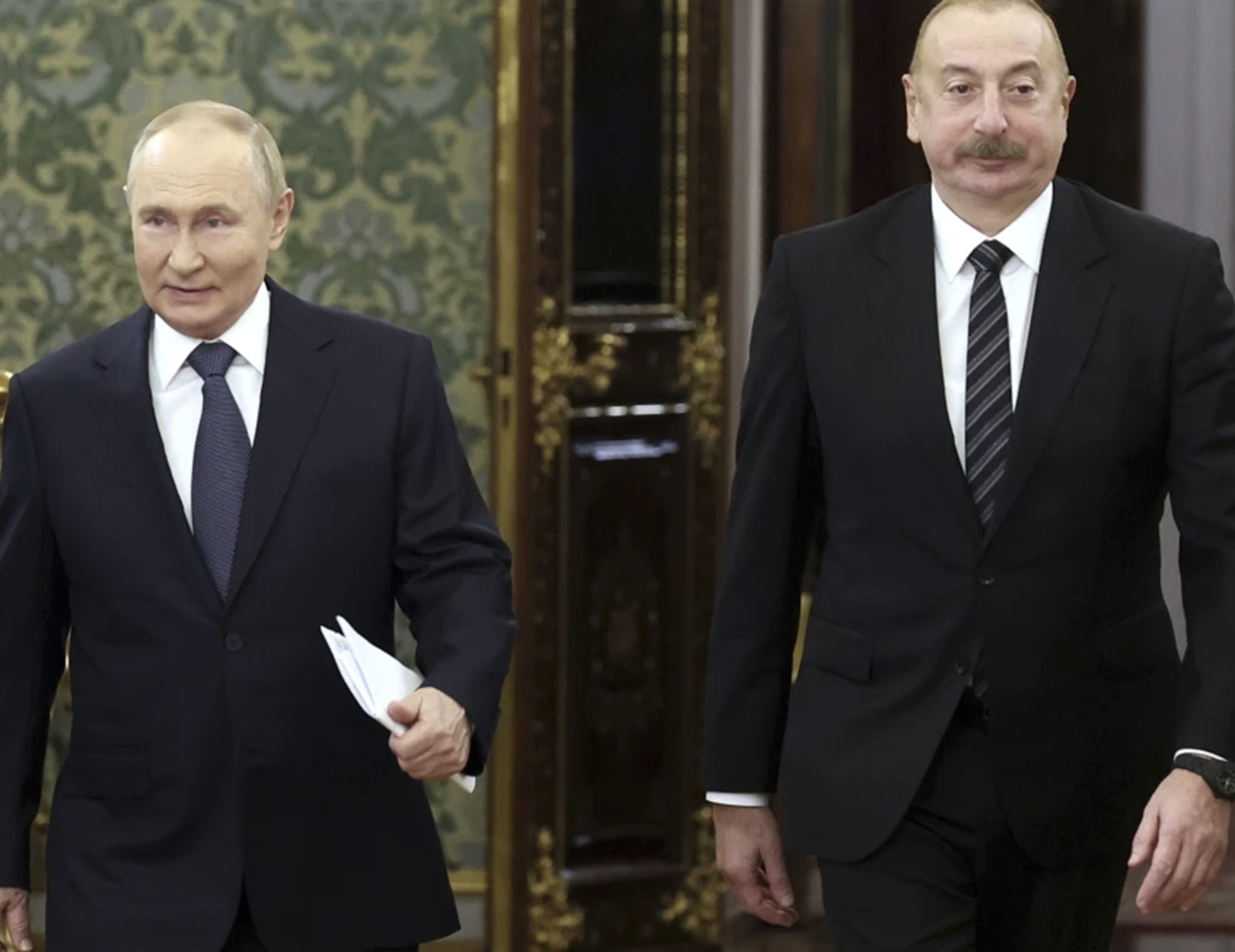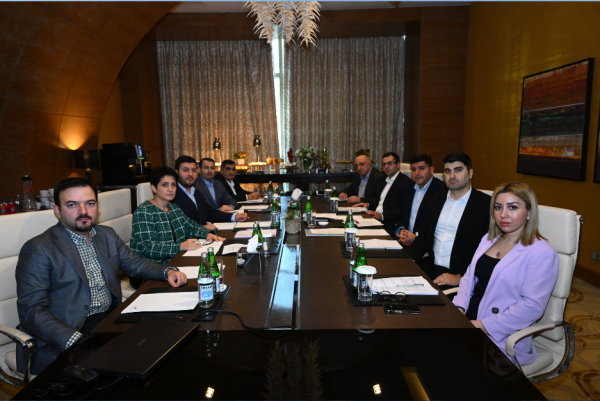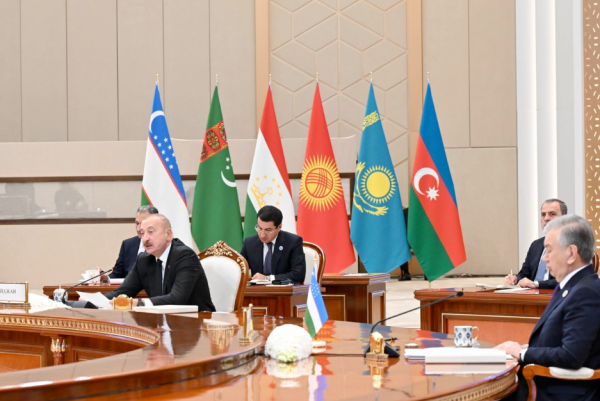A ‘Break or Brake’ moment: post-Russia South Caucasus

There is a “break or brake” moment emerging for the South Caucasus as it enters a completely new geopolitical realm. The 2022 invasion of Ukraine has forced the three republics to recalibrate their distance from Moscow: Armenia and Azerbaijan have intensified a rather subtle decoupling, whereas Georgia is attempting to symbolically reorient itself toward a warmer position with Russia. With a wide array of external actors, ranging from near neighbors such as Turkey and Iran to distant powers such as the United States and China, the evolving architecture of the new South Caucasus is set to intensify. This moment is, in essence, about the South Caucasus being (re)imagined, which also means that former peripheries are beginning to reimagine and reinterpret their relationships with the former metropole: Moscow.
For Azerbaijan, the three-year-long intensified decoupling from Moscow has yielded some tangible outcomes. Baku has successfully halted the Russian mediation in its dispute with Armenia and achieved the withdrawal of the Russian peacekeepers from Karabakh. But the tone of interactions with Moscow was pragmatic and based on realpolitik: President Putin’s August visit to Baku and President Aliyev’s interview with the key Russian TV presenter Dmitry Kiselyov were two good manifestations of this pragmatism. The turning point in the relations happened in late 2024 when an Azerbaijani Airlines plane got downed by the Russian military. On top of it, a massive Russian cyberattack led Baku to think and believe that even the most pragmatic calculations would hardly work with an actor that has regional domination ambitions.
The tensions got further strained following the arrest and reported deaths of several ethnic Azerbaijanis in Russia. Baku responded with official protest notes, demands for investigation, and reciprocal action, including the detention of Russian journalists from Sputnik’s Baku bureau. But the cycle continues as more and more Azerbaijanis are being arbitrarily arrested throughout Russia. The “diaspora card”, referring to 2-3 million Azerbaijanis in Russia, has long been on the table as a coercive mechanism to Baku; and it seems this card has been activated.
While there is open Azerbaijani-Russian disagreement in the terms of inter-state interactions, there is also accelerated efforts of Azerbaijan to re-design its socio-cultural landscape. One such interesting development, not necessarily tied up with the evolving Azerbaijani-Russian crisis, is the recent amendment to the constitution of the Nakhchivan Autonomous Republic which is to eliminate the references to the 1921 Moscow and Kars treaties. Their removal from the legal framework means that Baku wants to unmoor itself from Soviet-era legal constructs. One can argue that since these treaties envision Turkey`s role as well, it practically means that Azerbaijan also sidelines Turkey by this action. However, in contrast, Turkey’s role has evolved into a modern strategic partnership with Azerbaijan, formalised through the 2021 Shusha Declaration.
Armenia`s slow detachment from Moscow since the end of the Second Karabakh war is now transforming into a full reorientation. While it has yet to formally leave the Moscow-led Collective Security Treaty Organisation (CSTO), the political messaging from Yerevan leaves little doubt about its direction. The government no longer treats the Moscow-led alliance as a pillar of security, and instead, increasingly turns westward. (Meanwhile, not only preserving but even increasing bilateral trade with Russia, and in fact, turning into Russia`s backdoor for evading from Western sanctions.)
Currently, Armenia is experiencing an internal crisis as tensions between the government and nationalist-conservative forces, which many described as a "soft coup" attempt. The Armenian Apostolic Church, traditionally a powerful institution in Armenian society, openly criticized Prime Minister Pashinyan’s Western-oriented policies and positioned itself alongside opposition figures who accused the government of abandoning Armenia’s historical alliance with Russia.
In this context, it is important to see how the dynamics in Armenian foreign policy have drastically changed. A couple of days ago, Ukraine's military intelligence (HUR) reported that Russia is accelerating the staffing of its 102nd Military Base in Gyumry, to increase Moscow's military and political influence in the South Caucasus, particularly following recent strains in Russia’s relations with Azerbaijan. In response, Armenia's MFA issued a statement denying these claims. Very surprisingly, the MFA added that Armenia's territory cannot be used by third countries against its neighbors, a clear reference to Azerbaijan in this context. It is not just simple denial, but it affirms that the current government in Armenia is against the very notion, on principle, of allowing its territory to be used as a platform for hostile actions against Azerbaijan.
Armenia is also taking steps to assert greater control over key sectors of its economy, particularly energy. The government began to nationalise the electricity grid in the country, which is still legally owned by billionaire Samvel Karapetyan, who has deep ties to the Russian elite. As one of the wealthiest Russian-Armenian oligarchs, his Tashir Group has its roots in the Russian political economy. In this context, the Armenian government’s push to nationalise these assets is an effort to unwind decades of Russian economic influence on Armenia’s infrastructure.
Since the end of the Second Karabakh War, Armenia has increasingly reoriented itself toward the West, with growing engagement from the European Union. During a recent visit to Yerevan, the EU`s top diplomat Kaja Kallas stated that Armenia and the European Union “have never been closer.” That visit yielded a roadmap for visa liberalization as well as deeper economic engagement under the EU-Armenia Comprehensive and Enhanced Partnership Agreement (CEPA).
Into this vacuum, in recent months, Ankara has significantly expanded its diplomatic footprint across the South Caucasus. Two weeks ago, Nikol Pashinyan made a state visit to Istanbul, which became his first official high-level visit. By pivoting toward Ankara, while simultaneously engaging Brussels, it seems the Armenian government is trying to pursue diversified partnerships. Given Armenia’s growing need for regional connectivity and economic diversification, it appears that Turkiye has successfully leveraged this opening to advance the Trans-Caucuasian Connectivity routes that would connect Azerbaijan and Armenia with Turkiye. President Recep Tayyip Erdoğan recently announced that Armenia is now receptive to progressing on the corridor project. Some even suggest that a U.S. company could take the lead in designing and constructing the corridor without Moscow.
In contrast, Georgia appears to be shifting its foreign policy orientation. Once a strong aspirant for Euro-Atlantic integration, and now having been isolated from the West, Tbilisi is trying to have warmer ties with Moscow. Which may put Georgia in a risky situation and lead to regional isolation in the region by Armenia, Azerbaijan and Turkiye together.
Considering all aforementioned, what is emerging now is a historic, very rare and significant momentum, where Armenia, Azerbaijan, and Turkiye could create a new geopolitical axis based on the shared interests in preventing Moscow and Tehran from dominating the South Caucasus. This is likely to leave Georgia increasingly isolated, potentially paying a heavy price for its current political trajectory. In turn, the latest visit of Iranian President Masoud Pezeshkian to Khankendi shows that Tehran does not object to Ankara, Baku and Yerevan getting closer. This upsets Moscow, which views it as an expense of Russia’s declining influence in the region. In this landscape, Moscow risks finding itself sidelined, with the only willing regional partner remaining the government in Tbilisi.
Now it is time to ‘break or brake’ for all in the South Caucasus. There is a unique opportunity that could help institutionalize a “3+1” format, Armenia, Azerbaijan, Georgia and Turkiye. Looking beyond the Caucasus, this alignment could extend eastward into Central Asia. Kazakhstan, Uzbekistan, and Kyrgyzstan have all shown growing interest in bypassing Russian and Chinese bottlenecks via the Middle Corridor.







